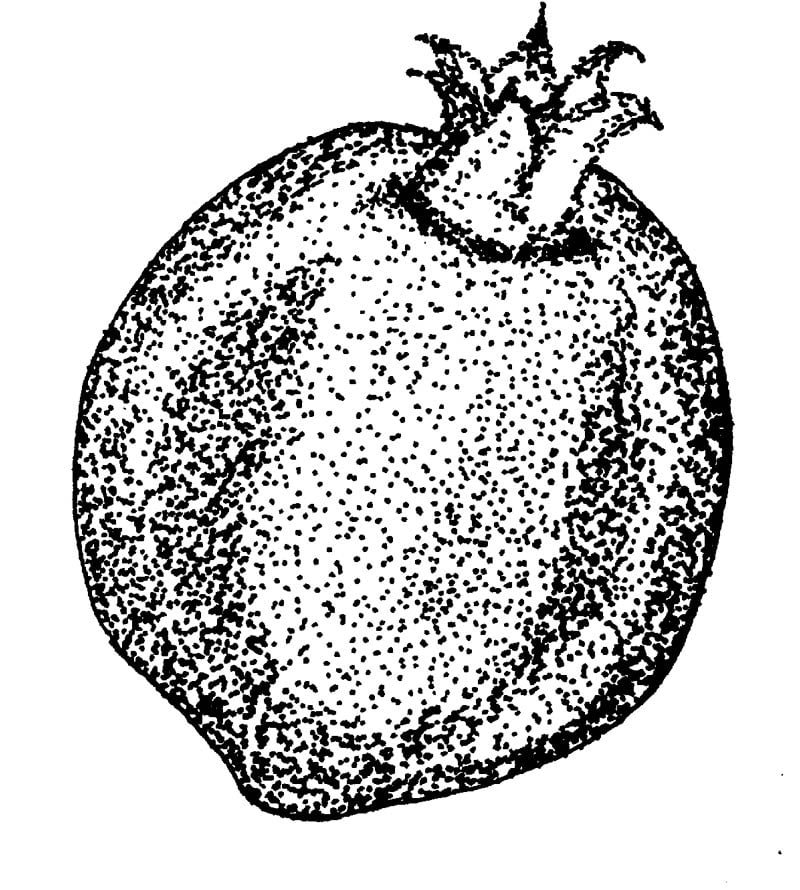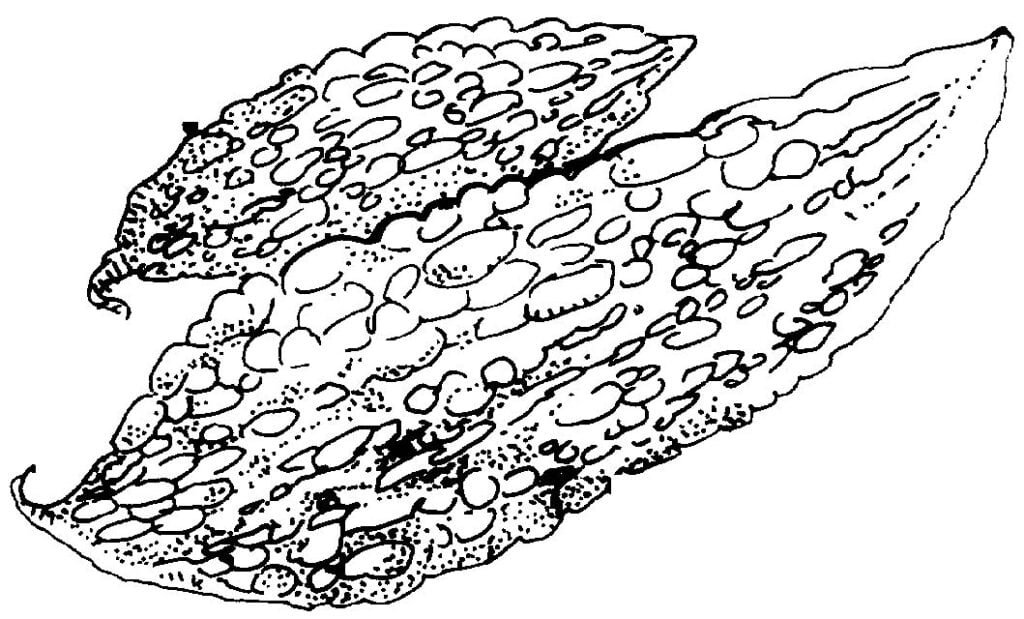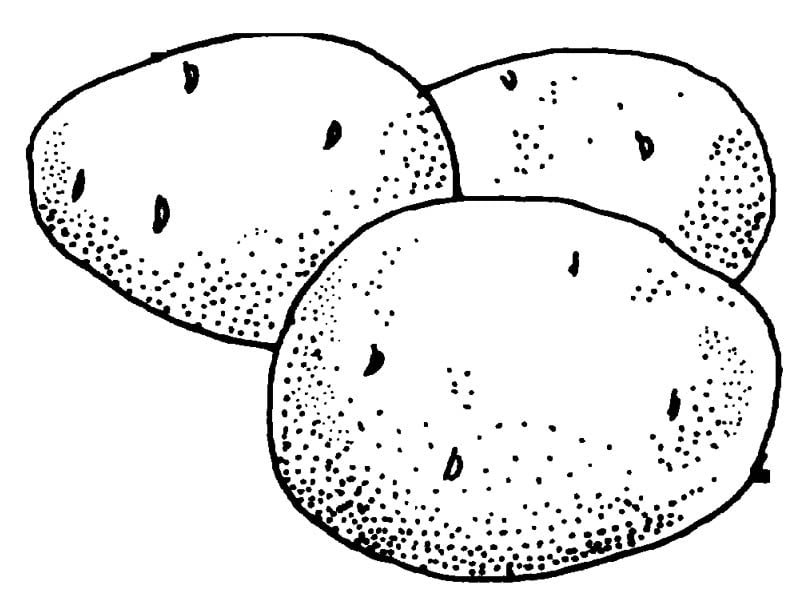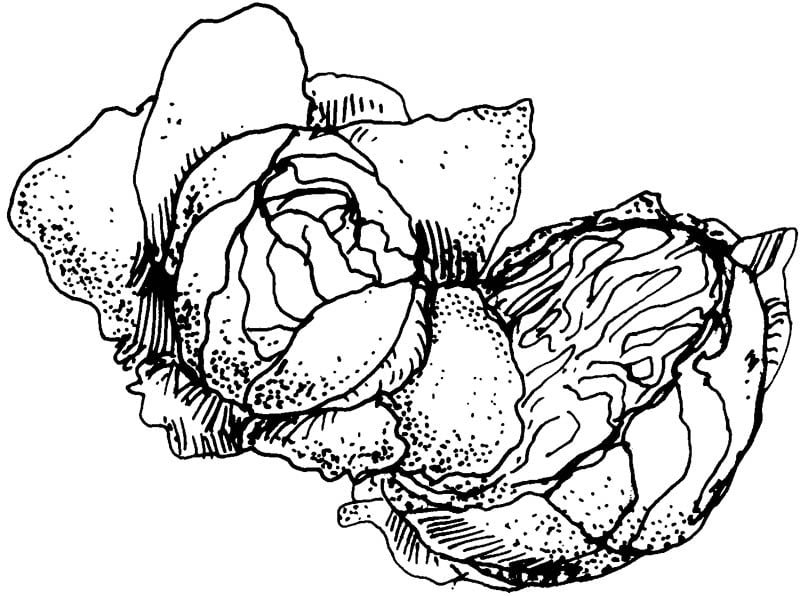Fruits
As you are aware that fruits are of different kinds. These fruits are also different in taste and their nutritious value also differ.
Mango (Aam)
Mango is used in raw and ripe-both stages. Raw mango is rich source of pectin, oxalic, citric, malic and succinic acids. It is a good source of Vitamin C, B1 and B2 too.

The ripe fruit is very wholesome and nourishing. The chief food ingredient of mango is sugar. There are citric. Malic and tartaric acids in a ripe mango, beneficial to the body and help to maintain the alkali reserve of the body. On an average 100 gms. mango contain 81.0 % moisture, 0.6 % protein, 0.4 % fat, 0.4 % minerals, 0.7 % fibre and 16.9 % carbohydrates. It provides is 14 mg calcium, 16 mg phosphorus, 1.3 mg iron, 16.0 mg Vitamin C and small amount of Vitamin B complex too. Its calorie value is 74. The ripe mango nourishes the body by increasing gastric juice, blood, flesh, fat, bone marrow and semen. This fruit is also beneficial in liver disorders, loss of weight and other physical disturbances.
Indian Gooseberry (Amla)
This is valued chiefly for its high Vitamin C contents. The dehydrated berry provides 2428 to 3470 mg of Vitamin C per 100 gms. Even when it is dried in the shade and then turned into powder, it retains as much as 1780 to 2660 mg of Vitamin C.
Its 100 gms. edible portion contains 81.8 % moisture, 0.5 % protein, 0.1 % fast, 0.5 % minerals, 3.4 % fibre and 13.7 % carbohydrates. It provides 50 mg calcium, 20 mg phosphorus, 1.2 mg iron, 600 mg Vitamin C and small amounts of Vitamin B-complex. Its calorie value is 48.
The fresh fruit is light, laxative and diuretic. A teaspoonful each of fresh gooseberry juice and honey mixed together forms a very valuable medicine for the treatment of several ailments. It should be taken every morning. Its regular use promotes vigour in the body within a few days. When fresh fruit is not available, dry powder can be mixed with honey.
Apple (Seb)
The apple is highly nutritive food. It contains minerals and Vitamins in a good quantity. On an average 100 gms. of apple contains 84.6 % moisture, 0.2 % protein, 0.5 % fat, 0.3 % minerals, 1.0 % fibre and 13.4 % carbohydrates. It provides 10 mg calcium. 14 mg phosphorus, 1 mg iron, 40 IU of Vitamin A and around 59 calories. There are small amounts of Vitamin E, H and B-Complex too.
The skin of apple and flesh just below contain more Vitamin C and A then the inner flesh. So this should not be discarded. The apple has malic acid which is completely utilised by the body. This malic acid is beneficial to the bowels, liver and brain.

The active medicinal ingredient of apple is pectin, found in the inner portion of the rind and pulp which aids in detoxification by supplying of galacturonic acid—necessary for the elimination of certain harmful substances.
Banana (Kela)
This fruit is a constitution of tissue building elements, protein, Vitamins, minerals and calories; along with easily assimilable sugar and high grade protein, which includes three essential amino-acids.
Its 100 gm quantity contains 70.1 % moisture 1.2 % protein, 0.3 % fat, 0.8 % minerals, 0.4 % fibre and 27.2 % carbohydrates. It provides 17 mg calcium, 36 mg phosphorus, 0.9 mg iron, 7 mg Vitamin C and small amount of Vitamin B complex. Its calorie value is 116.
This is supposed to be complete balanced diet if combined with milk.
Grapes (Angoor)
The grape is a highly valued food due to its rich content of sugar, which is formed almost, entirely by glucose. Grapes glucose is easily assimilated and helps in the metabolism of glucose which is helpful for proper functioning of heart and other physiologically important organs.
100 gms. grapes contain 92.0 % moisture, 0.7 % protein,
0.1 % Fat, 0.2 % minerals and 7.0 % carbohydrates. It has 20 mg. calcium, 20 mg phosphorus, 0.2 mg Iron, 31 mg Vitamin C and small amount of Vitamin B Complex, Vitamin A and P. Its calorie value is 32.
Black Berry (Jamun)
The 100 gm. of the edible fruit portion contains 83.7 % moisture, 0.7 % protein, 0.3 % fat, 0.4 % minerals, 0.9 % fibre and 14.0 % carbohydrates. It has 15 mg calcium, 15 mg phosphorus, 1.2 mg iron, 18 mg Vitamin C and small amount of Vitamin B-Complex. Its calorie value is 62.

Date (Khajur)
Date provides natural sugar in the forms of glucose and fructose. This sugar is absorbed immediately.
100 gm. edible portion of this fruit contains 15.3 % moisture, 2.5 % protein, 0.4 % fat, 2.1 % minerals, 3.9 % fibre, 75.8 % carbohydrates. It has 120 mg calcium, 50 mg phosphorus 7.3 mg iron, 3 mg Vitamin C and little amount of Vitamin B complex. Its calorie value is 317.
Papaya (Papita)
Ripe Papaya is excellent tonic for growing children, for pregnant women and nourishing mothers. It is a boon for the stomach.
Its 100 gm. edible portion contains 90.8 % moisture, 0.6 % protein, 0.1 % fat, 0.5 % minerals, 0.8 % fibre, 7.2 % carbohydrates. This provides 17 mg calcium, 13 mg phosphorus, 0.5 mg iron, 57 mg Vitamin C and small amount of Vitamin B-Complex. It’s calorie value is 32.
The most important content of the papaya is protein digesting enzymes in the milky juice or later which is carried in a network of vessels. This enzymes is similar to pepsin in its digestive action. This enzymes can digest protein 20 times than its own weights.
Avocado (Naspati)
It contains fat, which is supposed to be best, wholly free from the unpleasant butyric acid. It is a rich source of Vitamin A and maintains high resistance against bacterial infection. The protein of avocado is of finest quality. The pulp of fruit is so free from fibre, that it forms, with water, a fine emulsion, which closely resembles milk in consistency and appearance.
The 100 gms. edible portion contains 73.6 % moisture, 1.7 % protein, 22.8 % fat, 1.1 % minerals, 0.8 % carbohydrates. It provides 10 mg calcium, 80 mg phosphorus, 0.7 mg iron and 290 of Vitamin A. There is sufficient amount of Vitamin E and a small amount of Vitamin C and B-Complex. Its calorie value is 215.
Bael Fruit (Sriphal)
All the parts of this tree including stem, bark , root, leaves and fruit at all stages of maturity have medicinal virtues and are used as traditional medicine for a long time.

The ripe fruit is aromatic, astringent, which helps formation of skin, colourant and laxative. The half ripe fruit is good to improve appetite, to relieve stomach pain and helps fight scurvy caused due to Vitamin C deficiency.
100 gm. edible portion of this fruit contains 61.5% moisture, 1.8 % protein, 0.3 % fat, 1.7 % minerals, 2.9 % fibre, 31.8 % carbohydrates. It provides 85 mg calcium, 50 mg phosphorus, 0.6 mg iron, 8 mg Vitamin C, 8 mg alongwith small amounts of Vitamin B-Complex. Its calorie value is 137.
Musk Melon (Kharbooza)
Like water-melon, it is also a water fruit whose rind, pulp and seeds are all used for various application. There are also hybrid qualities of musk-melon also but their medicinal and food values remain similar to the more popular varieties. It grows in sandy areas and near river banks. It grows on creepers. Its taste, colour, shape, weight, pulp, rind, seeds and water-content vary as per the soils and regions on which they are grown.
Musk melon is sweet in taste, is cool, keeps all the three humors (bile, wind and phlegm), well balanced and also controls and regulates bile, quenches thirst, is diuretic, cleanser of system, removes constipation, builds up fresh blood and controls body temperature, is carminative, digestive and helps to expel toxic substances. Its rind, after being dried up under shade, is boiled in hot water; used to remove formation of stones, dysuria, retention of urine. Being a mild laxative, it cleans the bowels. Its seeds are dried up and used in many household edible items, desserts, puddings, jams etc.
Pomegranate (Anaar)
All parts of the plant—the roots, the bark, leaves, flowers, rind and seeds are used as medicine. Medical authorities of ancient India have described it as a light food and a tonic for the heart. The sweet fruit is considered as a good Laxative. A combination of sour and sweet fruit is valuable for stomach inflammations and heart pain. It acts on liver, heart and kidney and tones their functions. It has properties to alleviate thirst in cases of fevers and sickness. It increases the haemoglobin percentage and is effective in the treatment of anaemia. It supplies the required mineral and helps the liver to preserve Vitamin A from the food. Body’s resistance against infections is increased by its regular use.

Its 100 gm edible portion contains 78.0 % moisture, 16 % protein, 0.1 % fat, 0.7 % minerals, 5.1 % fibres, 14.5 % carbohydrates. It provides calcium 10 mg, phosphorus 70 mg, iron 0.3 mg, Vitamin C 16 mg and small amount of Vitamin
B-Complex. It has calorie value of 65.
Coconut (Narial)
The coconut is highly nourishing food article. It has a high oil content which is easily digestible. This oil resembles the butter in physical and chemical properties. The protein content of coconut is of high quality, containing all the amino acids.
The 100 gms edible portion of this fruit contains 36.3 % moisture, 4.5 % protein, 41.6 % fat, 1.0 % minerals, 3.6 % fibre and 13.0% carbohydrates. It provides 10 mg calcium, 240 mg phosphorus, 1.7 mg iron, 1 mg Vitamin C and small amount of Vitamin B-Complex and A. Fresh coconut’s calorie value is 444 and dried coconut’s calorie value is 662 (per 100 gm.).
Its tender kernel contains various enzymes and is easily digestible. The water of a single coconut contains sufficient Vitamin C to meet the daily requirements of the body. It also contains several Vitamins of B-Complex group. This water is a good source of several minerals too.
Watermelon (Tarbooz)
Water melon is well known summer fruit. Its rind is green and hard, seeds black or white, its pulp is red. In unripe form its rind, seed and pulp are white. It is full of juicy water. Its pulp is used in raw or juice form and its seeds are used as invigorative and nutritive ingredients, in medicines and eaten after divesting the seeds of their hard shells. Its chemical properties are rich in protein, carbohydrates, sugar, iron, phosphorus, and calcium. It is rich in iron.
Raisins (Munacca)
Raisins make a valuable food, if taken with milk. Raisins are dried grapes. Raisins are rich in carbohydrates, minerals and Vitamins.

Hundred gms. of raisins contain 20.2 % moisture, 1.8 % protein, 0.3 % fat, 2.0 % minerals, 1.1 % fibre and 74.6 % carbohydrates. These provide 87 mg calcium, 80 mg phosphorus, 7.7 mg iron,
1 mg Vitamin C and small amount of Vitamin B-Complex. Its calorie value is 308.
Vegetables
Vegetables also differ in taste and nutritions value as fruits are.
Onion (Pyaz)
On an average a mature onion contains 87% moisture, 11% carbohydrates, 1.2% proteins, 0.4% minerals, 0.6% fibres and also has traces of thiamine, nicotinic acid, riboflavin and Vitamin C. The pungency of onion is due to a volatile oil, allyl propyl disulphide. Plant part used—Underground bulb.
Radish (Mooli)
On an average radish consists of 94.4 % moisture, 3.4 % carbohydrates, 0.7 % protein, 0.1 % fat, 0.6 % minerals and 0.8% fibres. It also contains the trace of Vitamin A, thiamine, riboflavin, nicotinic acid and Vitamin C. The characteristic pungent flavour of radish is due to the presence of volatile isothiocyanates. Plant part used—Root and green leaves.
Sugar Beet (Chukander)
On an average, the root contains 83.8 % moisture, 1.7 % protein, 13.6% carbohydrates, 0.1 % fat and 0.8 % mineral matter. There are also traces of calcium, potassium, iron and Vitamin B1 and C. Plant part used—Underground bulb.
Tomato (Tamatar)

On an average tomato fruit consists of 93% moisture, 3.6% carbohydrates, 1.9 % proteins, 0.1 fats,0.6% minerals, 0.7% fibres. Vitamins A, B1, B2 and C are also present. It is the rich source of potassium. Plant part used—Fruit.
Carrot (Gajar)
On an average the fresh root contains 86% moisture, 0.9 % proteins, 0.1% mineral matter. It also contains carotene, a precursor of Vitamin A and appreciable amounts of thiamine and riboflavin. Plant part used—Underground root.
Cucumber (Kheera)
On an average the fruit contains 93% moisture, 2.5% carbohydrates, 0.1% fat, 0.7% minerals, 0.2% proteins, 0.6% fibres. It is also a source of potassium, calcium and Vitamin B and C. Plant part used—Fruit.
Lemon (Neebu)
Fruit consists of 87.4% moisture, 0.9% proteins, 10.6% carbohydrates, 0.4% minerals. It also has organic acids (citric acid, malic acid), essential oils, glycosides, anthocyanins, Beta-carotene and Vitamin C. Plant part used—Fruit.
Mint (Podina)
Green leaves contain 92 % moisture, 2.9 % carbohydrates,
2 % proteins, 0.6 % fats, 0.5 % fibres and 1.9 % minerals. They also contain Vitamins A, B1 and C. Leaves yield essential oil which contains d-menthol, menthol and limonene. Plant part used—Whole plant and leaves.
China Spinach (Chaulai)
The plant ocntains 85.8 % moisture, 4.9 % protein, 0.5 % fat, 5.7 % carbohydrates, 3.1 % mineral matter, 0.5 % Calcium,
0.1 % phosphorus, 21.4 mg iron, Vitamins A, B1 and C. Plant part used—Whole plant and leaves.
Bitter Gourd (Karela)

Green fruits contain 90 % moisture, 2.1 % carbohydrates, 0.2 % proteins, 0.3 % fats, 0.9 % minerals, 2.3 % fibres and Vitamins A, B1, B2 and C. Highly aromatic essential oil contains carotene, saponin, momordicine and charantin. They also contain 0.27 % calcium, 0.38 % magnesium, 0.64 % phosphorus. Plant part used—Fruit.
Cluster Bean (Guar)
Pods contain 82.5 % moisture, 3.7 % protein, 0.2 %fats, 2.3 % crude fibre, 9.9 % carbohydrates, 1.4 % mineral matter, 0.13 % calcium, 0.05 % phosphorus, 5.8 mg/100 gm Iron. They also contain Vitamin A and C. Plant part used—Fruit.
Lady’s Finger (Bhindi)
Fruits contain 89.6 % moisture, 6.4 % carbohydrates, 1.9 % proteins, 0.2 % fats, 0.7 % minerals, 1.2 % fibres. They are rich in calcium, phosphorus, potassium and iodine. They also contain Vitamins A, B1, B2 and C. Plant part used—Fruit.
Ginger (Adrakh)
On an average dry ginger contains 6.8 % moisture, 8.6 % protein, 6.5 % fat, 6.0 % crude fibre, 66.5 % carbohydrates, 5.5 % ash, 1.7 % mineral matter and Vitamins A, B1, B2 and C. The characteristic odour and pungent taste is due to a pale yellow viscid essential oil which contains zingiberene, gingiberol, d-camphene and geraniol. Plant part used—Underground fresh rhizome and dry rhizome (Sonth).
Potato (Aloo)

On an average potato tubers contain 75 % moisture, 22 % carbohydrate, 1.5 % protein, 0.1 % fats, 0.6 % minerals and 0.4 % fibres. They also contain Vitamins A and C. Plant part used—Underground stem, tuber.
Pumpkin Red Gourd (Kaddoo, Kashiphal)
Fruit consists of 92.6% moisture, 1.4 % protein, 0.1 % fat, 5.3 % carbohydrates, 0.6 % mineral matter, 0.01 % calcium, 0.03 % phosphorus, 0.7 mg / 100 gm iron and Vitamins A, B1 and C. Plant part used—Fruit.
Round Gourd (Tinda)
The fruits contain 92.3 % moisture, 1.7 % protein, 0.1 % fat 0.6 % mineral matter, 5.3 % carbohydrates, 0.02 % calcium, 0.03 % phosphorus and 0.9 mg/100 gm iron. It also contains Vitamins A, B1 and C. Plant part used—Fruit.
Spinach (Paalak)
Spinach leaves contain 92 % moisture, 3 % carbohydrates, 2 % proteins, 0.7 % fats, 0.6 % fibres and 1.7 % minerals. It is rich source of magnesium, sodium, potassium, sulphur and phosphorus. It also contains Vitamins A and C, iodine and lecithin. Plant part used—Leaves.
Sweet Potato (Shakarkand)
Sweet potato contains 70 % moisture, 27 % carbohydrates, 0.2 % fats, 1.8 % proteins, 1.0 % crude fibres. It also contains Vitamins A. Plant part used—Tuberous roots.
Important Note : Diabetics should avoid it.
Turnip (Shalgam)
On an average roots contains 91.6 % moisture, 6.2 % carbohydrates, 0.5 % proteins, 0.5 % fats, 0.3 % minerals and 0.9 % fibres. They also contain Vitamins A, B1, and C. 0.03 % Calcium, 0.04 % phosphorus and 0.4 mg / 100 gm iron are also present. Plant part used—Roots.
White Goose Foot (Bathua)
The leaves contain 81.1 % moisture, 15.4 % proteins, 4.05 % fats, 10.6 % carbohydrates, 8.1 % minerals, 6.3 % crude fibre and Vitamins A and C, thiamine and riboflavin. They are also rich in sodium, calcium, iron and phosphorus. Plant part used— Leaves and twigs.
Pea (Matar)

Dry seeds contain 10.6 % moisture, 58.5 % carbohydrates, 22.7 % proteins, 1.0 % fats, 4.3 % fibres and 3.0 % minerals. Seeds also contain traces of magnesium, manganese, iron and zinc. Plant part used—Seeds.
Garlic (Lahsun)
On an average garlic bulbs consist of 62 % moisture 28 % carbohydrates, 6.5 % proteins, 0.8 % fats, 0.9 % minerals, 1.1 % crude fibres and traces of Vitamins B1, B2, C and A. Bulbs also posses 1.0 % essential oil with sulphur compounds allicin and allisatin. Plant part used—underground stem called bulb, containing many cloves.
Bottle Gourd (Lauki)
The fruit contains 96 % moisture, 2.5 % carbohydrate, 0.2 % proteins, 0.1 ?% fats, 0.5 % minerals and 0.6 % fibres. It is rich in potassium, calcium and Vitamin B1 and C. Plant part used—Fruit.
Brinjal (Baingan)
The fruit contains 93 % moisture, 4 % carbohydrates, 1.5 % proteins, 0.3 % fats, 0.2 % minerals and 1.2 % fibres. It is rich in potassium, sulphur, phosphorous and Vitamins A and C. Plant part used—Fruits.
Broad Bean (Bakla)
Fresh fruit contains 60.6 % moisture, 20.4 protein, 1.5 % fat, 28.4 % carbohydrates, 7.1 % fibre, 3.2 % minerals and Vitamins A, B1 and C. Fruits also contain convicin and vicine glucosides. Plant part used—Fruits.
Cabbage (Patta Gobhi)

Cabbage consists of 92 % moisture, 4.7 % carbohydrates, 1.9 % proteins, 0.09 % fats, 0.6 % minerals. It also contains calcium, phosphorus, sodium, potassium and 1 % crude fibres. Vitamins A, B1, B2 and C are also present. Plant part used—All leaves.
Loofah (Torai)
An average fruit contains 93 % water 1.2 % proteins, 0.2 % fats, 3.1 % carbohydrate, 2.0 % fibre, 0.5 % ash and 1.0 % minerals. Fruit also contains Vitamins. A bitter substances luffin is present. Plant part used—Fruit.
Important : Do not take smooth loofah when you are suffering from dysentery.
Do not take angled loofah when you are suffering from phlegm.
The patients suffering from leprosy, jaundice, boil, plethora and gonorrhoea should not take ginger and avoid its use during summer and autumn seasons. Its use would cause harmful effects on the body and internal organs.

